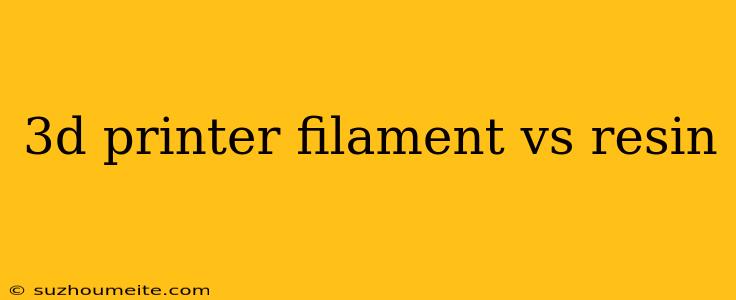3D Printer Filament vs Resin: Which One is Right for You?
As the 3D printing technology continues to evolve, one of the most significant decisions makers face is choosing the right material for their projects. Two of the most popular options are 3D printer filament and resin. While both have their advantages and disadvantages, understanding the differences between them is crucial in determining which one suits your needs.
What is 3D Printer Filament?
3D printer filament is a type of thermoplastic material that comes in a spool or coil form. It's melted and extruded through a heated nozzle to create the desired shape. Filaments are available in various colors, materials, and properties, making them suitable for a wide range of applications.
What is Resin?
Resin is a type of liquid photopolymer that hardens when exposed to light. In 3D printing, resin is poured into a vat and cured layer by layer using a laser or LED light. Resin is known for its high detail resolution and is often used for creating intricate models, jewelry, and dental applications.
Key Differences: Filament vs Resin
Print Resolution
- Filament: 0.1-0.4 mm layer thickness, limited by the extruder nozzle size
- Resin: 0.01-0.1 mm layer thickness, allowing for higher detail resolution
Material Properties
- Filament: Thermoplastic, can be brittle, and prone to warping
- Resin: Photopolymer, can be flexible, and less prone to warping
Printing Speed
- Filament: Faster printing speeds, typically 30-100 mm/s
- Resin: Slower printing speeds, typically 10-30 mm/s
Cost
- Filament: Generally cheaper, $20-50 per kilogram
- Resin: More expensive, $50-100 per liter
Post-Printing Processing
- Filament: May require sanding, painting, or applying coatings
- Resin: Typically requires washing and curing, but can be used as-is
When to Choose Filament:
- For projects that require durability and impact resistance
- When you need to print large objects or batches quickly
- For applications that require specific thermal or electrical properties
When to Choose Resin:
- For projects that require high detail resolution and accuracy
- When you need to create intricate models or small parts
- For applications that require a high level of precision and smoothness
Conclusion
Choosing between 3D printer filament and resin ultimately depends on your specific project requirements and personal preferences. While filament offers durability and speed, resin provides high detail resolution and precision. Understanding the advantages and limitations of each material will help you make an informed decision and achieve the best possible results for your 3D printing projects.
